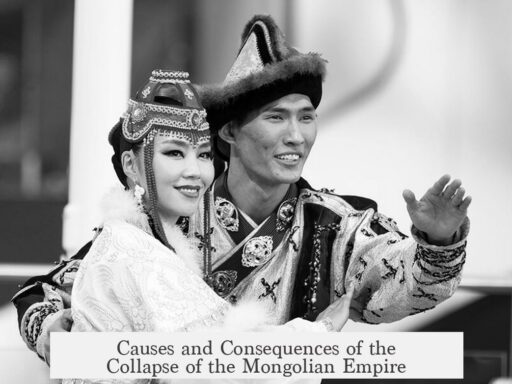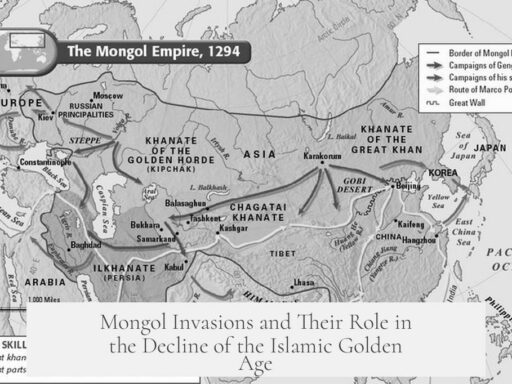The physicists who worked on the Manhattan Project were so young primarily because the fields essential to nuclear bomb development—quantum mechanics and nuclear physics—were themselves relatively new and were populated by early-career scientists who had recently earned their PhDs. This youthful cohort combined emerging expertise with high motivation, reflecting both the generational shift in physics and the wartime demand for bright, adaptable talent.

The Manhattan Project gathered many scientists generally in their late 20s to 40s. Data from the project’s secret internal history shows that Los Alamos, the main research site, skewed significantly young. The average age for scientists centered around the late 20s to early 30s, with outliers like the elder Niels Bohr and the exceptionally young Ted Hall. Such age distribution reflected the natural life cycle of physicists, where new PhDs engage intensely in research before moving into administrative or teaching roles as they age.
The field of physics at the time was still emerging from classical foundations into the revolutionary framework of quantum mechanics. Quantum theory matured between 1905 and the 1930s. Key discoveries like the neutron in 1932 were crucial for bomb physics. Many older physicists were trained mainly in classical physics and struggled to embrace quantum mechanics. Younger scientists, conversant with these new theories, were better positioned to tackle nuclear challenges.

Further, many of the talented physicists had earned their doctorates in the 1920s and 1930s, during which the Institute for Advanced Study and US universities began producing world-class scientific minds. This shift made the US a hub for advanced physics, especially after European turmoil and persecution displaced many Jewish scientists, some later moving to American labs.
When World War II escalated, the Manhattan Project had to quickly assemble a skilled but loyal scientific team. Recruiting younger physicists ensured both contemporary expertise and allegiance. Additionally, the project included few late-career senior scientists in direct lab roles. Instead, senior figures took administrative positions, managing research but rarely performing bench work.

Scientific work related to nuclear fission unfolded rapidly after the 1938–1940 discoveries. Many young scientists were attracted to this ‘gold rush’ due to the novelty and urgency. The last major fission ingredients had been discovered just a few years prior, so the generation growing up with these new theories naturally undertook the crucial research.
| Factor | Explanation |
|---|---|
| Emerging Field | Quantum mechanics and nuclear physics were young disciplines; leading researchers were often early in their careers. |
| Recent PhDs | The talent pool consisted largely of scientists with PhDs from the 1920s-30s, combining fresh knowledge with experimental skill. |
| Life Cycle | Older physicists often transitioned to administrative roles, leaving active lab work to younger scientists. |
| US Scientific Development | US universities and institutes began producing top physicists, especially after European disruptions, concentrating young talent. |
| Wartime Needs | Urgency and security concerns favored recruiting younger, loyal scientists rather than older, less adaptable specialists. |
The Manhattan Project was a large operation, involving thousands, not just physicists but chemists, engineers, and other specialists. Physicists took central roles in conceptualizing and solving nuclear challenges, but many more non-physicists contributed to implementation and materials science.

Comparisons to Nobel Prize winners’ ages often mislead. Nobel-worthy work can be recognized decades after discovery. Many scientists on the project later gained recognition but were comparatively young during their key research.
In sum, the Manhattan Project’s youthful physicist cohort emerged from a convergence of scientific innovation and wartime demands. The rapid evolution of nuclear physics required fresh expertise, and the project’s urgency favored dynamic, versatile researchers rather than senior, classical physicists.

- The nuclear physics field was new, so most experts were early-career scientists.
- Younger physicists had recently earned PhDs aligned with quantum theory developments.
- Senior scientists mostly managed or administrated rather than performed laboratory research.
- US institutions began producing leading physicists just before the war.
- Security and urgency led to recruiting loyal, adaptable younger scientists.
Why Were the Physicists Who Worked on the Manhattan Project So Young?
The physicists who worked on the Manhattan Project were notably young because the cutting-edge science they dealt with—quantum mechanics and nuclear physics—was itself a fresh, emerging field. The project drew heavily from a pool of recent PhDs and early-to-mid-career scientists who had grown up learning the very theories essential to developing the atomic bomb. Simply put, the youthfulness of the team matched the youthfulness of the physics they were pioneering.

Now, let’s unpack this fascinating historical detail by peeling back layers you might not expect. Ever wonder why the project wasn’t dominated by old, gray-bearded veterans? The answer sits at the crossroads of new science, urgent wartime needs, and the evolution of American physics.
Los Alamos: A Young Town of Genius

The Manhattan Project’s secret city of Los Alamos was buzzing with youthful energy. The age distribution data from the Manhattan District History shows that most scientists there were in their late 20s to early 40s, with a peak around age 29—similar to the median age of contemporary physics PhD graduates. This graph, accessible here, paints a clear picture: Los Alamos was a hotbed of young brains.
Older physicists, like the legendary Niels Bohr, stood out as rare elders in the laboratory. On the other end, Ted Hall, only 18, was one of the youngest—literally a teenager contributing to one of the biggest scientific feats of the century. Imagine the pressure!
Why This Age Curve? The Talent Pool and Timelines
The Manhattan Project needed brilliant, nimble minds conversant with quantum mechanics—a field barely 35 years old at the time. The physics backbone, including concepts like atomic structure and the neutron (discovered in 1932 by Chadwick), was new terrain for science. Older scientists were often more versed in classical physics, sometimes skeptics of quantum principles.
J. Robert Oppenheimer exemplifies this perfect-new-generation physicist. He earned his PhD in 1927, just a year after the Schrödinger Equation was published. Unlike older physicists, Oppenheimer had the advantage of immersing himself in quantum mechanics from the get-go, making him a natural leader.
Life Cycle of Physicists: From Labs to Leadership
Physics is a career marked by a shift from hands-on research toward administrative roles as scientists age. Manhattan Project administrators like Vannevar Bush and James Conant weren’t physicists per se but embraced managerial roles for guiding research at a macro level. The “young guns” ran the daily experiments, calculations, and innovations.
This division reflects a broader trend. Prime researchers tend to be younger, dynamic, and capable of absorbing rapidly changing knowledge. Older professionals often step into oversight and strategic roles. Thus, the youthful age distribution at Los Alamos suits the nature of front-line scientific work.
Comparisons and Clarifications
It’s tempting to compare the young Manhattan physicists with Nobel Prize winners, but that’s a trap. The Nobel Prize often recognizes work decades after it was done. For example, Hans Bethe won the 1967 Nobel for research he published in 1938—nearly 30 years earlier. So measuring the age of Nobelists at the time of discovery, rather than award, aligns better with the young age profile in wartime research.
Additionally, Los Alamos was no tiny lab with a handful of physicists. Contrary to popular media, it was a sprawling complex of thousands, including many non-physicist scientists and support personnel. The physicists got the spotlight, but they were part of a much bigger scientific ecosystem.
The Youth of Quantum Physics and Nuclear Science
To grasp why the project was populated by youthful physicists, picture a science barely in its teens. Quantum mechanics was identified around 1905. The very structure and components of the atom—the neutron, the nucleus—were only discovered between 1911 and 1932.
Theoretical and experimental physicists had only recently been able to theorize and test how atomic nuclei could be split—nuclear fission. This process, vital to the bomb, relies on a cascading release of neutrons, a concept pretty much unheard of before the 1930s. Scientists who were old enough to have studied this from the school bench were rare.
Nuclear Fission: The New Frontier
Even in 1940, the idea that nuclear fission could be weaponized seemed impossible to many. Enrico Fermi, for instance, initially received a Nobel for producing heavier elements by neutron bombardment—he didn’t realize he was on the path to chain reactions.
The field of radiochemistry stood on the fence between physics and chemistry, led by figures like Irene Curie and Otto Hahn, who were middle-aged or older. But the project’s core physics team, racing toward bomb development, was significantly younger—because the “gold rush” to develop fission weapons sparked a surge of fresh scientific energy, mostly among younger researchers.
Wartime Urgency and the American Edge
The dramatic rise of US scientific institutions played a huge role. The Institute for Advanced Study, founded in 1930 in Princeton, became a magnet for top young talent. More crucially, many European physicists fleeing Nazi Europe brought cutting-edge knowledge but were often younger scientists who had to relocate and integrate into American projects.
The US’s wartime urgency demanded energetic, adaptable scientists willing to buckle down and innovate rapidly. Younger physicists fit that bill perfectly—open to new ideas and less wedded to traditional physics concepts that older generations might cling to.
The MIT Rad Lab and Other Projects—Was This Unique?
Before assuming Manhattan Project’s youthfulness was unique, consider other contemporaneous wartime efforts, like the MIT Radiation Laboratory. These initiatives often featured similar age profiles, highlighting a trend: new science in times of war naturally draws younger talent.
Young scientists bring fresh eyes and relentless energy. Older professionals, while valuable, were often engaged in administrative or strategic roles rather than the hands-on research frenzy required. The Manhattan Project simply epitomized this dynamic.
Practical Lessons from the Manhattan Age Profile
What can we learn today? If your project requires innovation in a newly minted field, recruitment will naturally skew to younger specialists—people who have grown up learning the field’s latest language. If physics can mature dramatically in 30 years, so can any discipline.
- Tip for innovators: Recognize that fresh perspectives often come from younger people intimately familiar with emerging knowledge.
- For leaders: Combine the passion of youth with the wisdom of experience by pairing young researchers with seasoned administrators.
And if you ever feel too old to learn something new, just remember Ted Hall, a teen who helped build the first atomic bomb’s theoretical models. Age… well, it’s really just a number.
Final Thoughts
The age of Manhattan Project physicists wasn’t a coincidence. It was the perfect storm of physics’ young age, the rapid pace of discovery, and a wartime need for energetic minds. The bomb’s creators had to understand, invent, and apply physics concepts only decades old. That required a team of scientists in their physical and intellectual primes, breaking new ground every day.
Next time you watch a movie depicting Oppenheimer and his crew, remember the youthful minds behind those historic breakthroughs—they made the impossible possible, and did so with the brain power of a generation riding the wave of modern physics.
Why were many physicists at Los Alamos so young?
Many were recent PhD graduates or mid-career scientists in their 30s and 40s. The bomb’s physics involved new fields like quantum mechanics, so young physicists who grew up with these theories were better suited than older ones.
How did the youth of quantum mechanics influence the ages of Manhattan Project physicists?
Quantum mechanics and nuclear physics were new sciences. Older physicists often focused on classical physics and found it hard to adapt, while younger scientists studied the latest theories during their training, making them ideal for the project.
Was the Manhattan Project unique in having young scientists?
It’s unclear if the age distribution was unusual without comparing to other wartime labs like the MIT Rad Lab. Many large projects then had a mix but Manhattan had many recent PhDs due to the new physics involved.
Why didn’t many late-career scientists work directly at Los Alamos?
Senior researchers often moved into administrative or supervisory roles. At Los Alamos, top scientists mostly led research, while administrators and older scientists managed other aspects of the project.
Does comparing Manhattan Project physicists to Nobel laureates’ ages make sense?
No. Nobel prizes recognize work often decades old. Physicists at Manhattan were young because the research was current, while Nobel awards come much later, after long evaluation and impact assessments.




